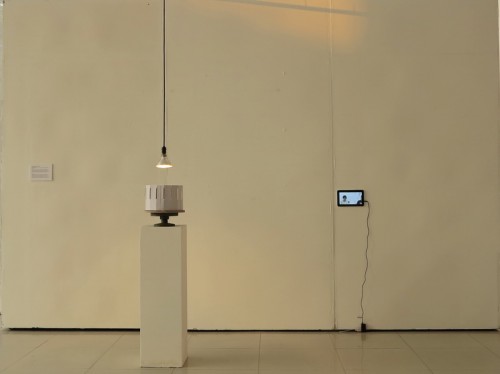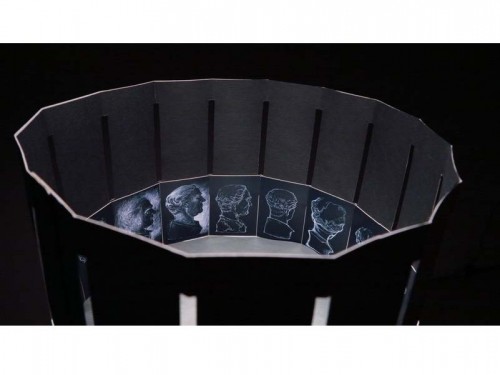
 360⁰ Study of Corrado Feroci is a participatory performance base drawing in associate with: Nudsupang Puthaikul, Srinuan Saisuk, Sarankan Linsuwanont, Pissanu Thongmee, Jarupat Narkpun, Pitchanan Sornyen, Rebecca Vickers, Sareena Sattapon, Wilawan Wiangthong, Supamat Supalukampaiporn, Napat Klawmanee, Athit Siritavang, Surapong Sudasna na Ayudhya, Warunyou Changpradit
360⁰ Study of Corrado Feroci is a participatory performance base drawing in associate with: Nudsupang Puthaikul, Srinuan Saisuk, Sarankan Linsuwanont, Pissanu Thongmee, Jarupat Narkpun, Pitchanan Sornyen, Rebecca Vickers, Sareena Sattapon, Wilawan Wiangthong, Supamat Supalukampaiporn, Napat Klawmanee, Athit Siritavang, Surapong Sudasna na Ayudhya, Warunyou Changpradit
360⁰ Study of Corrado Feroci, the Dialogue : Seeing and Being, ongoing project by jiandyin created on occasion of the EXOTIKA 2013 exhibition, curated by Alfred Banze and Christine Falk, at the Art Centre Silpakorn University
Media: Video on monitor, B/W, loop, silent, 7’44”, 16 print B/W photos, papers, plywood, banding wheel
Corrado Feroci / Silp Bhirasri, born in Florence, was invited to Thailand in 1923 to teach Western sculpture. In 1944 when Italy surrendered during World war II, He changed his name and national to Thai to avoid arrest by the occupying Japanese army. In 1943, he founded what later became Silpakorn University which he was then considered the father of the Thai modern art. He was the sculptor of many of Bangkok’s best known monuments: Democracy Monument, Victory Monument and the statue of King Rama I at Memorial Bridge, etc.
Note on curatorial statement: the exotic – previously a term used to describe a Eurocentric, rapturous view of distant worlds – has taken on a new global meaning in the 21st century. Almost everyone all over the world encounters the exotic in various ways on a daily basis, be it in the form of people, commodities, smells, in the media, the sciences, medicine etc. Today, artificial exotic worlds of experience are a major factor in the entertainment and cultural industry across the world. Tourism serves as a ritual of establishing cultural boundaries and mutual “exotification”.
